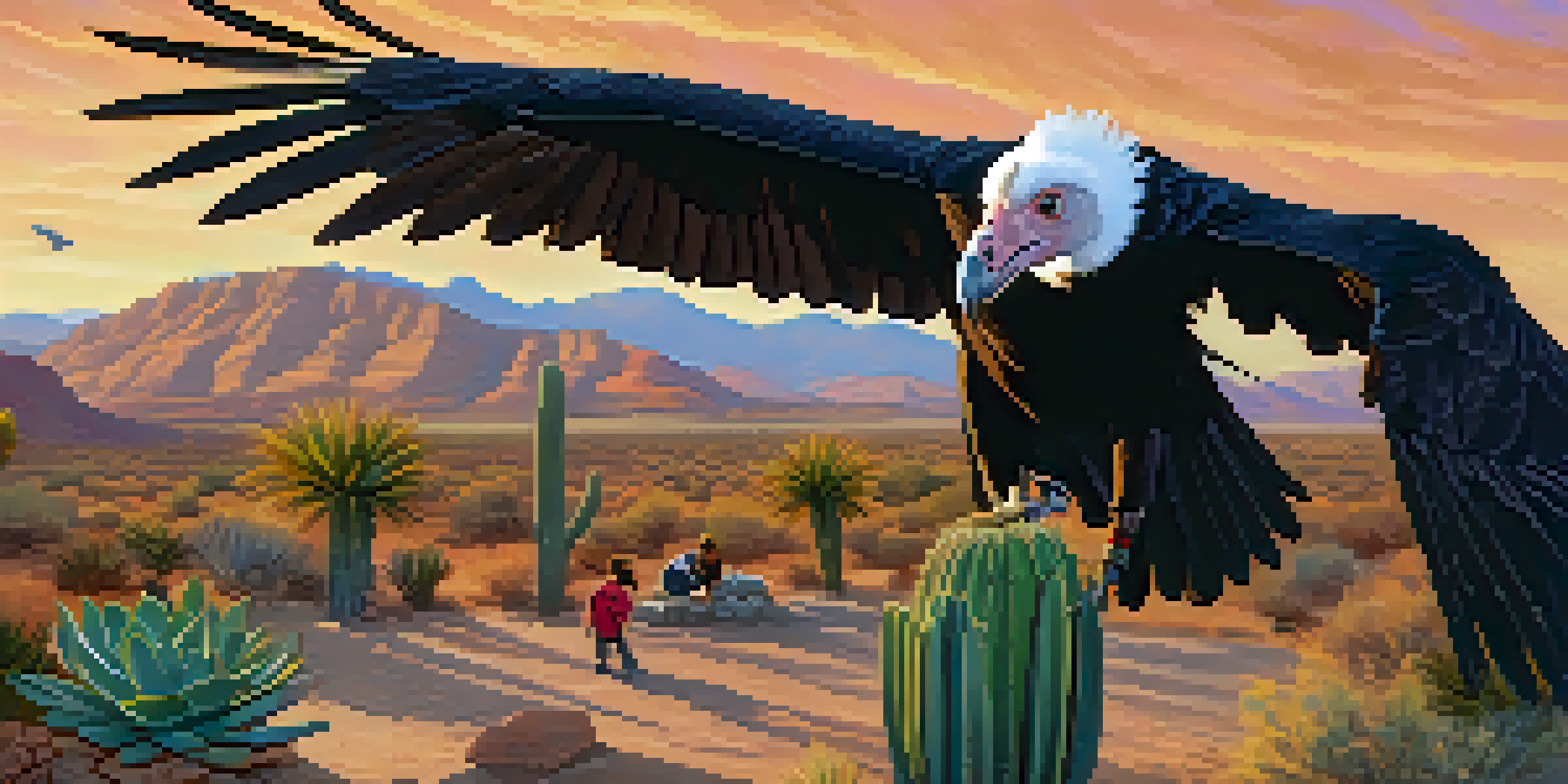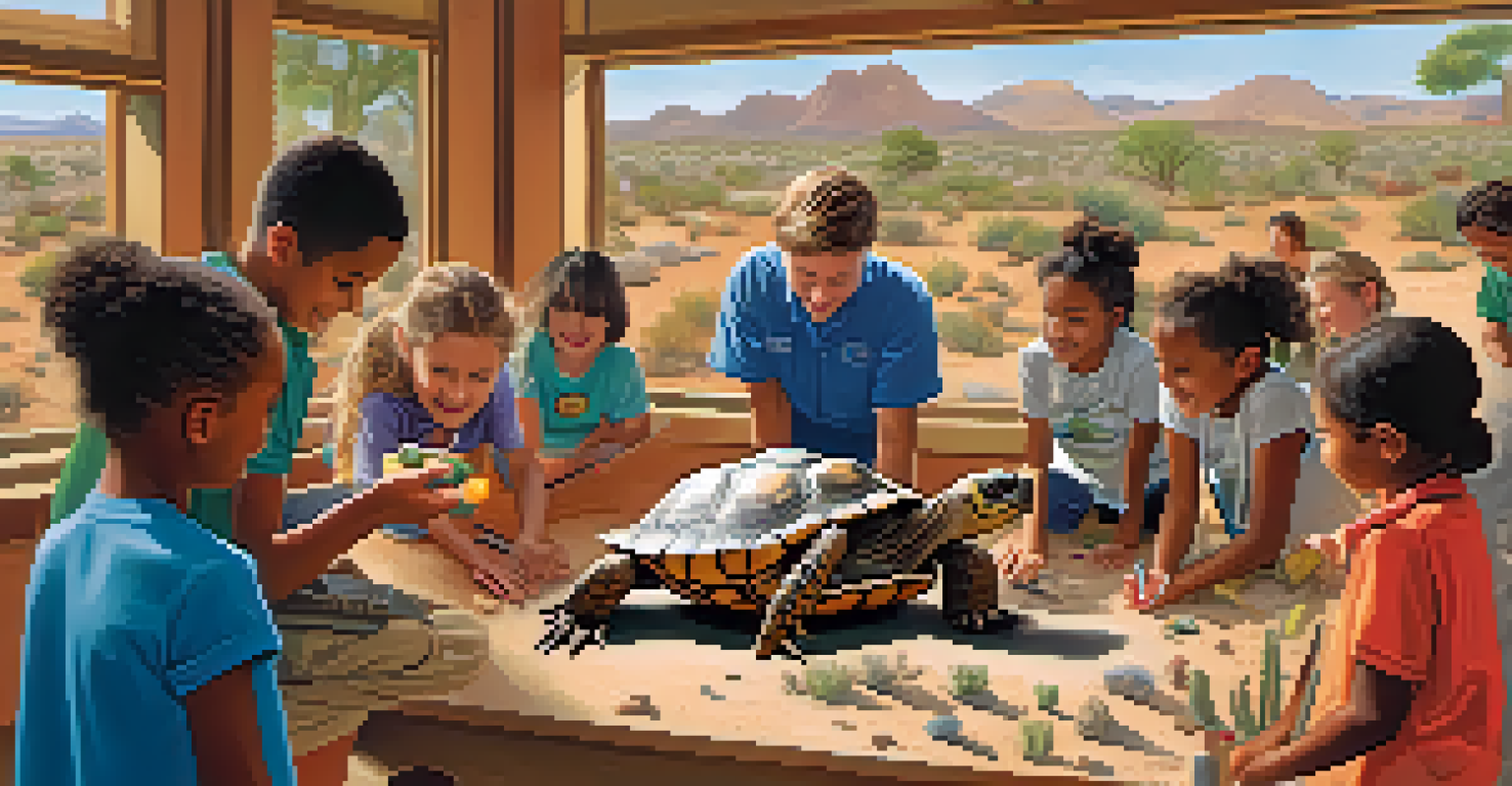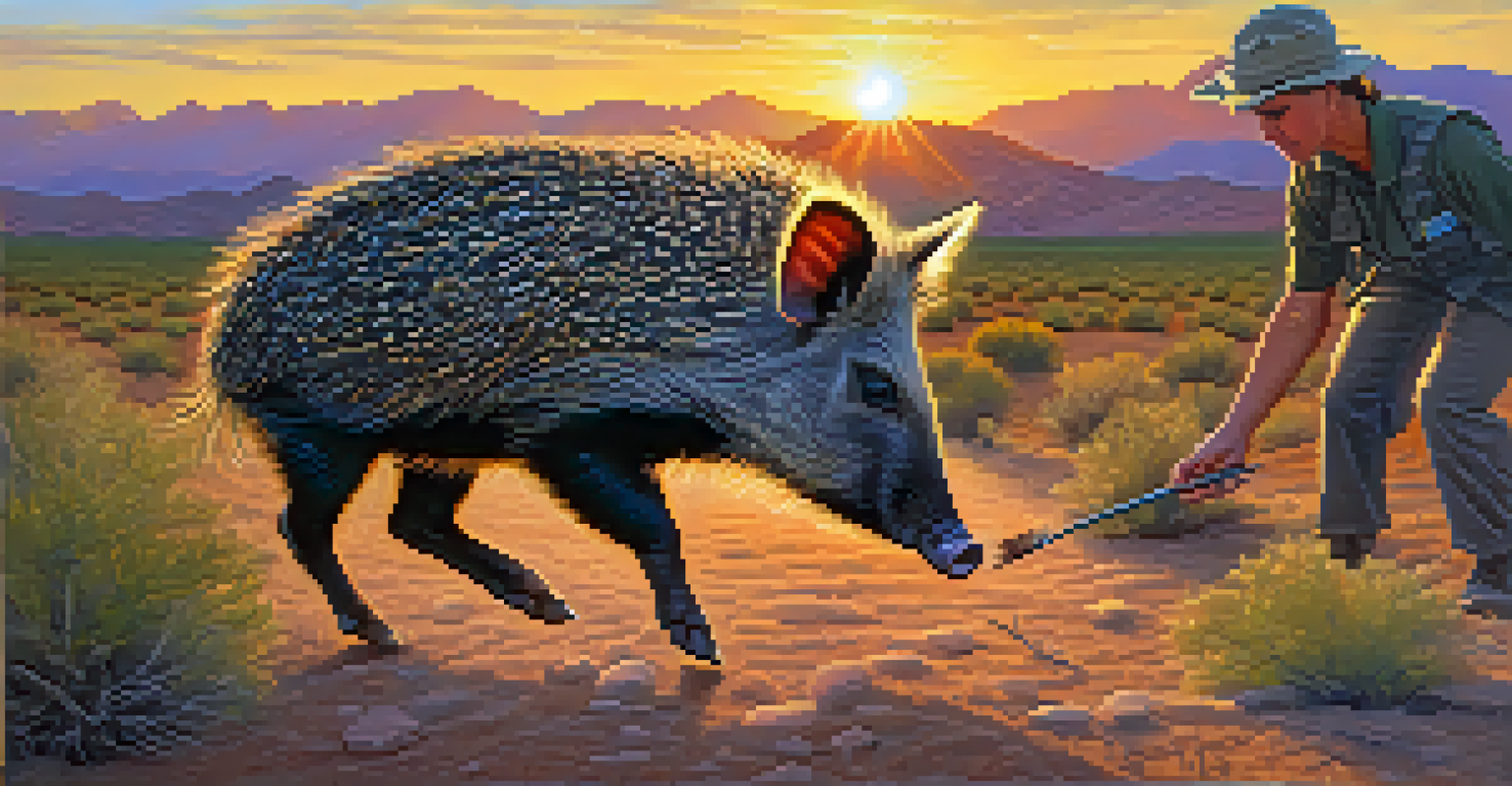The Importance of Wildlife Rehabilitation for Arizona's Ecosystem

Understanding Wildlife Rehabilitation in Arizona
Wildlife rehabilitation is the process of caring for injured, sick, or orphaned wild animals with the goal of releasing them back into their natural habitats. In Arizona, a state known for its diverse ecosystems—from deserts to forests—this practice plays a critical role. Rehabilitation centers across the state are dedicated to providing these animals with medical care, nourishment, and a safe environment while they recover.
Wildlife and humans cannot coexist without understanding and respect for each other.
The importance of these centers can't be overstated. Not only do they help individual animals, but they also contribute to the overall health of the ecosystem. By ensuring that wild animals can return to their habitats, rehabilitation specialists maintain the balance within various food chains and ecological processes.
Moreover, wildlife rehabilitation fosters a deeper connection between the public and nature. As people engage with these centers, they become more aware of the challenges faced by local wildlife and the importance of conservation efforts.
The Role of Arizona's Unique Ecosystem
Arizona's ecosystem is a complex web of life featuring unique species such as the desert tortoise, the California condor, and the Gila monster. Each species plays a specific role in maintaining ecological balance. For instance, the desert tortoise helps aerate the soil while the California condor is a vital scavenger, cleaning up carrion and preventing disease spread.

When wildlife rehabilitation centers care for these species, they not only save individual animals but also protect the intricate connections between species within their habitats. This is particularly essential in Arizona, where habitat loss and environmental changes can threaten entire populations.
Wildlife Rehab Supports Ecosystems
Wildlife rehabilitation centers in Arizona play a crucial role in maintaining ecological balance by caring for injured and orphaned animals.
Additionally, the state's varying climates and landscapes provide unique challenges for wildlife. Rehabilitation efforts are tailored to address these challenges, ensuring that animals can thrive once released back into the wild.
Addressing Human-Wildlife Conflicts
As urban areas expand in Arizona, human-wildlife conflicts are becoming more common. Animals may find themselves injured after encounters with cars or trapped in urban settings. Wildlife rehabilitation centers play a crucial role in addressing these conflicts by rescuing and rehabilitating affected animals.
The greatness of a nation and its moral progress can be judged by the way its animals are treated.
By treating injuries and educating the public about safe coexistence practices, these centers help reduce the likelihood of future conflicts. This proactive approach not only aids individual animals but also fosters a more harmonious relationship between humans and wildlife.
Moreover, successful rehabilitation stories can inspire community members to advocate for wildlife-friendly practices, such as creating wildlife corridors or minimizing the use of harmful pesticides. This ripple effect can lead to a more compassionate and informed society.
Educational Outreach and Community Involvement
Wildlife rehabilitation centers in Arizona often engage in educational outreach activities to raise awareness about local wildlife and conservation efforts. These programs provide valuable information on the importance of protecting wildlife and their habitats.
Through workshops, volunteer opportunities, and school programs, these centers encourage community involvement. By inviting locals to participate in rehabilitation efforts, they foster a sense of stewardship and responsibility towards Arizona's wildlife.
Community Engagement is Essential
Educational outreach programs at rehabilitation centers foster community involvement and awareness about local wildlife conservation.
This educational aspect is vital, as it helps cultivate a new generation of wildlife advocates. When people understand the challenges faced by local species, they are more likely to support conservation initiatives and become active participants in protecting their environment.
The Challenges of Wildlife Rehabilitation
Despite the noble efforts of wildlife rehabilitation centers, they face numerous challenges. Funding is often limited, relying heavily on donations and grants to operate. This can restrict the resources available for medical care, housing, and food for the animals in their care.
Additionally, rehabilitators must navigate complex legal regulations concerning wildlife, which can vary by species and situation. This can complicate their ability to provide timely and effective care, especially in emergencies.
Moreover, the emotional toll of rehabilitation work cannot be overlooked. Caregivers often face difficult decisions regarding the fate of animals that may not survive or be releasable. Balancing hope and reality is a daily struggle in this field.
Success Stories from Rehabilitation Efforts
Despite the challenges, there are countless success stories that highlight the impact of wildlife rehabilitation in Arizona. For instance, the recovery of the California condor, once on the brink of extinction, is a testament to the power of dedicated rehabilitation efforts. After years of careful breeding and rehabilitation, these majestic birds are once again soaring over Arizona's landscapes.
Another heartwarming story involves the rescue and rehabilitation of orphaned baby javelinas. These young animals were brought to a rehabilitation center where they received care and eventually returned to the wild, contributing to the local population. Such stories not only inspire hope but also highlight the effectiveness of rehabilitation programs.
Challenges in Wildlife Rehabilitation
Despite their impact, wildlife rehabilitation centers face challenges such as limited funding, legal regulations, and emotional strain on caregivers.
These success stories serve as powerful reminders of what can be achieved through compassion, dedication, and community support. They encourage ongoing involvement in wildlife rehabilitation efforts and foster a greater appreciation for Arizona's unique wildlife.
How You Can Support Wildlife Rehabilitation
If you're inspired by the importance of wildlife rehabilitation in Arizona, there are several ways you can contribute. Volunteering your time at a local wildlife rehabilitation center is one of the most impactful ways to help. Whether it’s assisting with animal care, educational outreach, or fundraising initiatives, your involvement can make a significant difference.
Additionally, consider donating to these centers to support their essential work. Funds can help provide medical supplies, food, and other resources necessary for the rehabilitation of injured or orphaned wildlife. Every little bit counts, and your generosity can help ensure that more animals receive the care they need.

Finally, spreading awareness about local wildlife issues and the importance of rehabilitation can amplify your impact. Share your knowledge with friends and family, engage in community discussions, and advocate for policies that protect wildlife and their habitats. Together, we can create a healthier ecosystem for all.